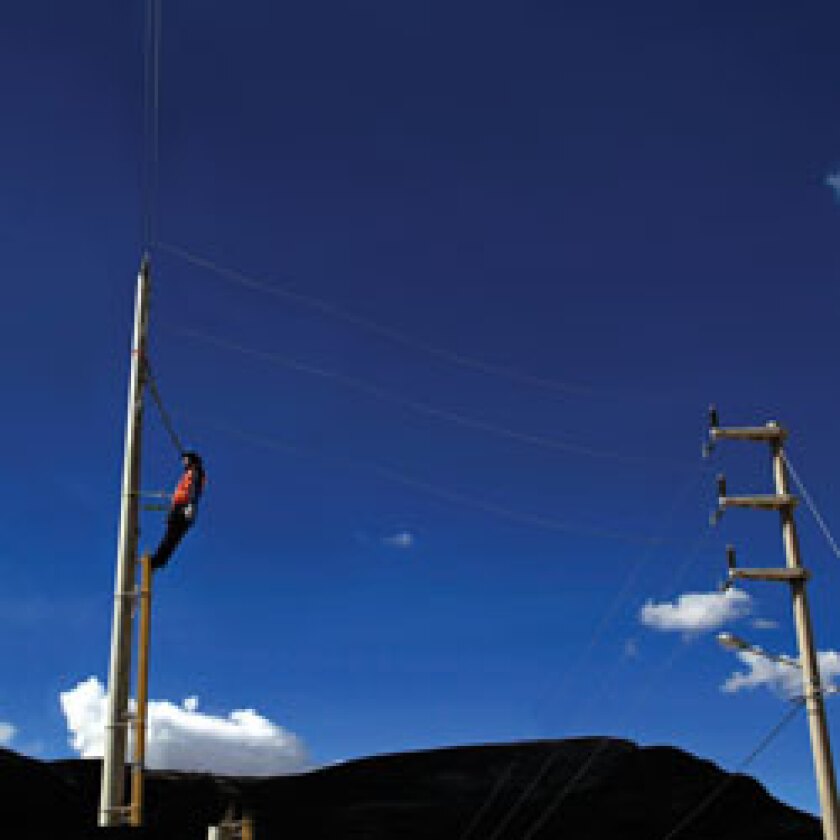Peru’s economy grew at the fastest rate in South America last year, with GDP increasing by 6.3%. But this figure was exceeded by that of electricity demand, which increased by 7.8% in 2012 and is expected to increase by close to 10% annually if the economy grows steadily above 6%. Fuel imports were $5.7 billion, up 2% from the previous year. Fuel accounts for the largest individual import item within the $42.1 billion of total imports.
President Ollanta Humala’s government is confident that investment will keep the lights on and eventually lead to more oil/gas discoveries that will reduce the need to import fuel, but critics disagree. The government’s investment promotion agency, ProInversion, plans to offer in concession nearly 10 projects for electricity transmission and generation in the coming 18 months. The first concession for a transmission line, requiring $114 million in investment, was awarded to Spain’s Abengoa on February 21.
The government also forecasts more than $20 billion in investment from international companies either exploring for or producing oil and gas; around $6 billion is already being invested in new power plants that will come on line over the next three years. The numbers are far greater than anything witnessed in the country in recent years.
“I am very confident: we have at least $3 billion planned for public-private associations for transmission and generation projects,” economy and finance minister Luis Miguel Castilla told foreign reporters in late February. Castilla says his office is well aware that bottlenecks in the energy sector could curb growth forecasts. “There is no doubt that energy is fundamental when we talk about guaranteeing competitiveness or bottlenecks to growth. We have seen neighbouring countries experience slower growth because of problems with energy supply,” he said.
PATTERN OF CHANGE
But Peruvian analysts challenge Castilla’s optimism, arguing that the Humala government, in particular, could actually keep investors away because of constant policy changes: “The policies of President Humala’s administration have been completely erratic. They make grandiose announcements, but when it comes time for the fine tuning they have to retreat and start over,” says Miguel Santillana, who focuses on energy and mining issues at the Institute of Peru, a local think tank. The starkest example of the government’s missteps, according to Santillana, is that of abrupt changes in plans for a new gas pipeline.
The Peruvian government announced in February that it would award a contract for the construction of a new natural gas pipeline in the south of the country by the end of this year. The 800km pipeline, with an estimated investment of $2.8 billion, would allow natural gas from four fields to flow to the southern coast. The administration states that the gas will be used to fuel new power plants and allow for the development of a petrochemical industry in Peru. Minimum investment in this “energy complex” would be $15 billion, adding nearly 0.5% annually to GDP. The questions raised by Santillana are not about the pipeline itself, but the fact that this is the third project of this kind launched in less than 12 months. President Humala announced with great fanfare in March 2012 that a local subsidiary of Brazilian construction giant Odebrecht would build parallel gas and liquids pipelines to the south of the country. He said construction would begin three months later. The government’s enthusiasm changed when Odebrecht put the price tag for the project close to $6 billion.
The president changed gear, announcing in July that instead of that project, the government would organize an international tender for the construction of a pipeline that would transport just ethane, used in a final format for the production of plastics. The ethane plan was scrapped later in the year for the new, scaled-down, southern pipeline. The new project was approved by Congress in late December. César Gutiérrez, former president of the state-run oil company Petroperu, doubts that there will be much private-sector interest in the new pipeline plan, as the government “rushed into the project without taking into account the energy sector as a whole. The government has plans, but not a policy.”
NO TO RENEWABLES?
The focus on the pipeline and corresponding production of thermal electric power using natural gas exposes a problem dating back more than a decade, with the state promoting the use of fossil fuels instead of the country’s abundant renewable sources. The Energy and Mines Ministry claims Peru has the potential to produce 60,000MW with hydroelectric plants and another 20,000MW with wind farms and solar plants. “The continued focus on thermal electric production is troubling. The government says it is promoting hydroelectric power, but all the main projects have been scrapped, and now it is calling for another 2,000MW in thermal production with the southern gas pipeline,” says Santillana.
- Like every year, Emerging Markets daily newspaper covers the Inter-American Development Bank’s annual meeting, held in Panama in mid-March. Pick up your copy at the meeting, read the news on our website and follow us on twitter @emrgingmarkets
